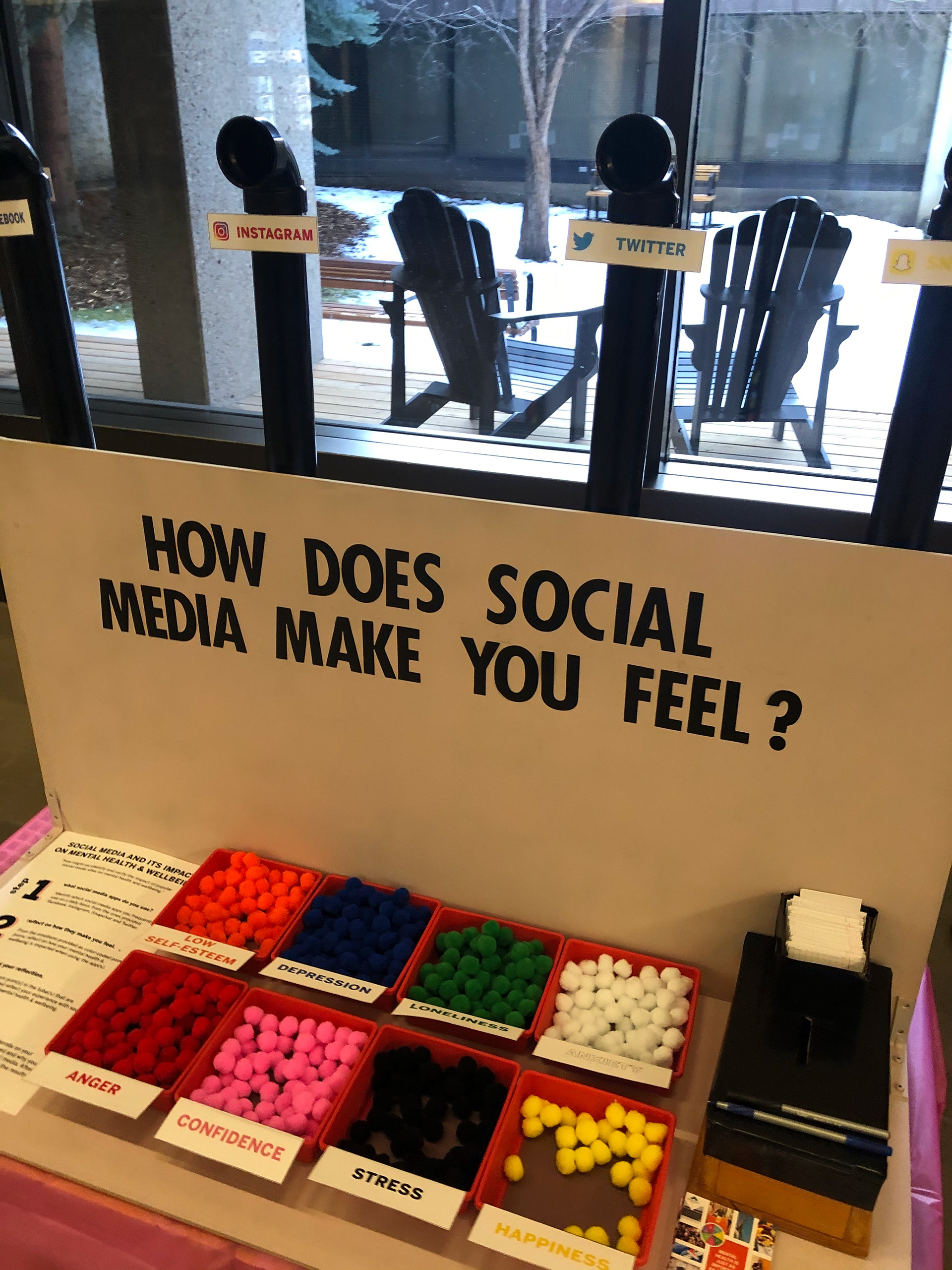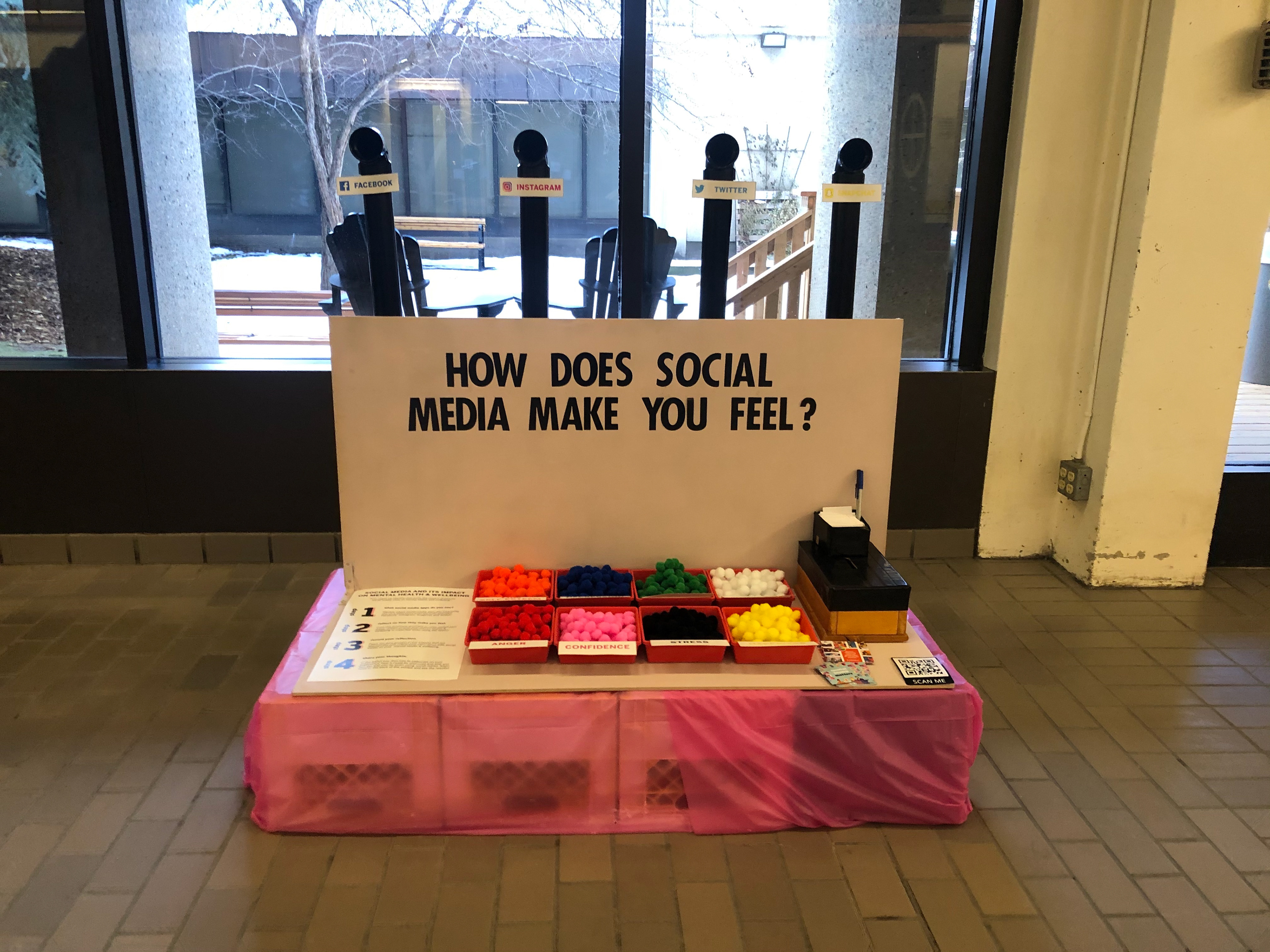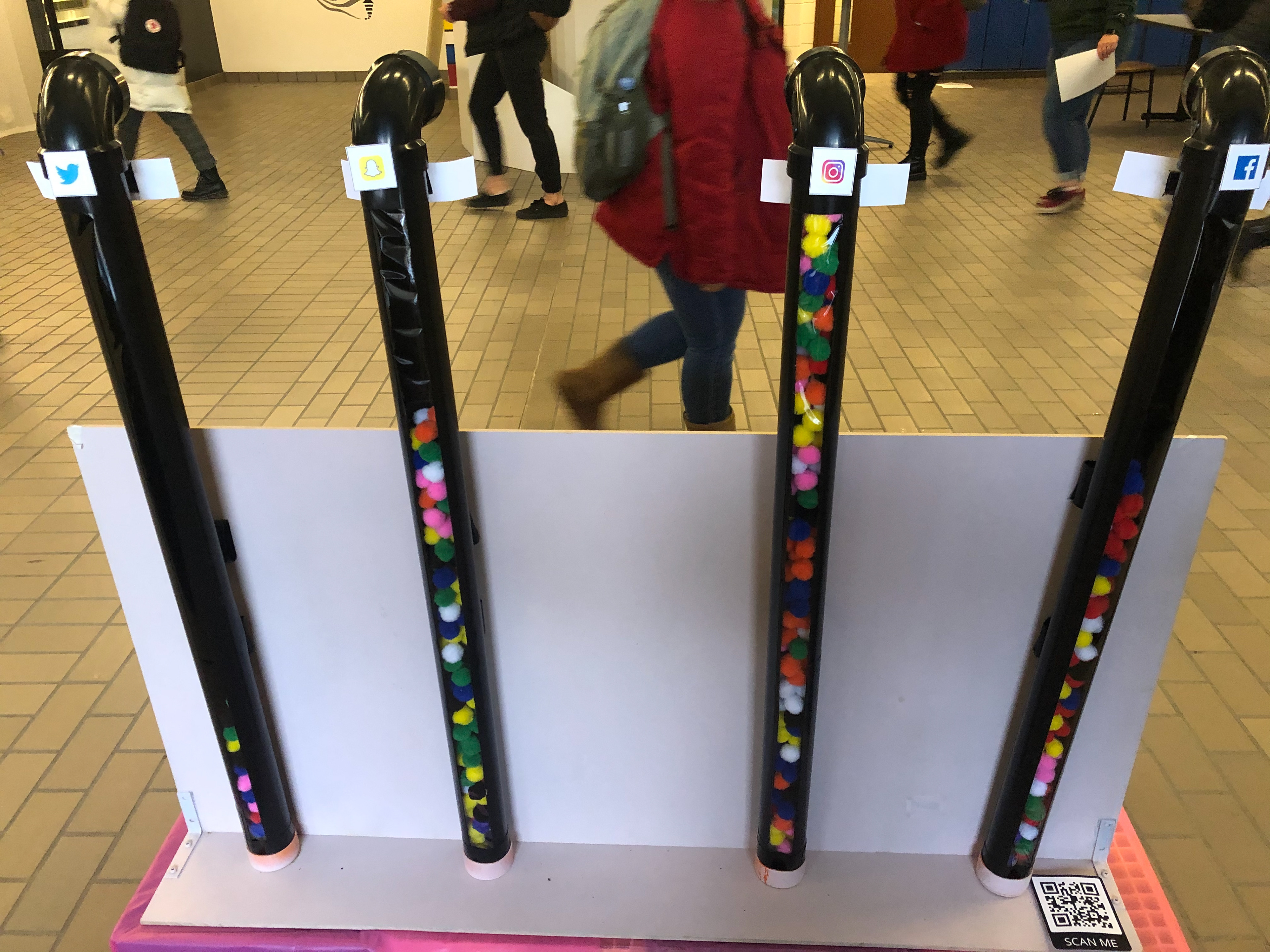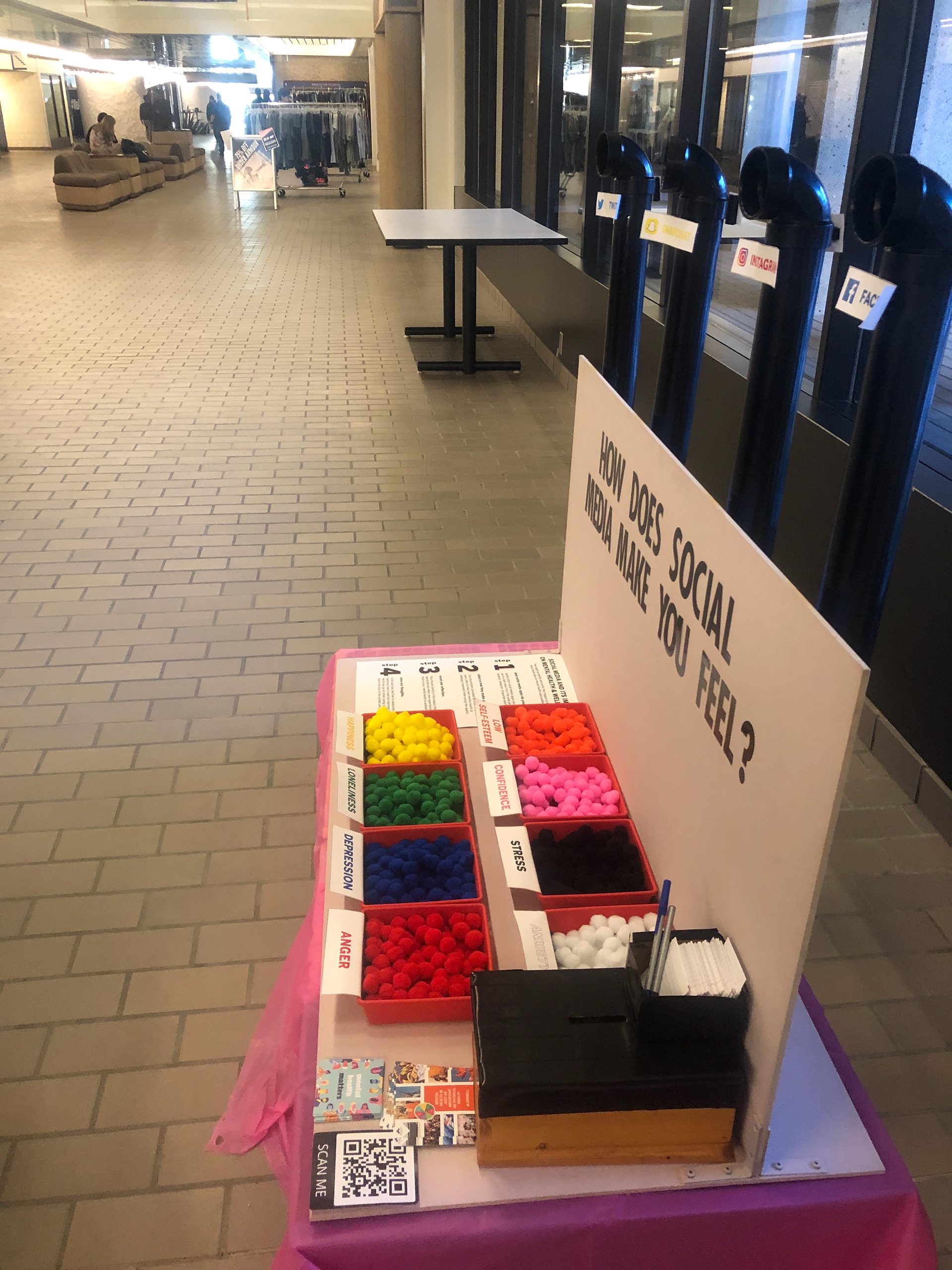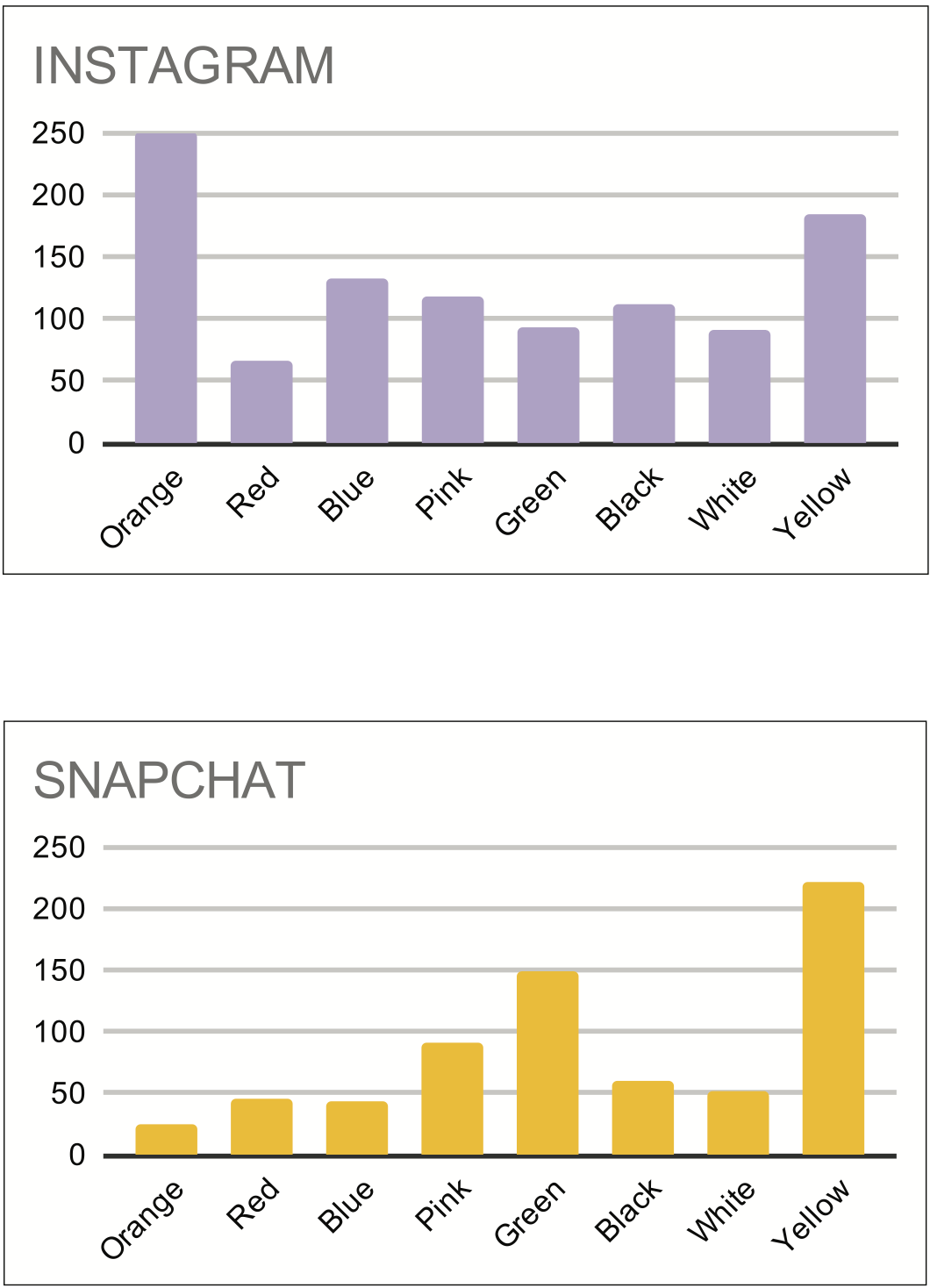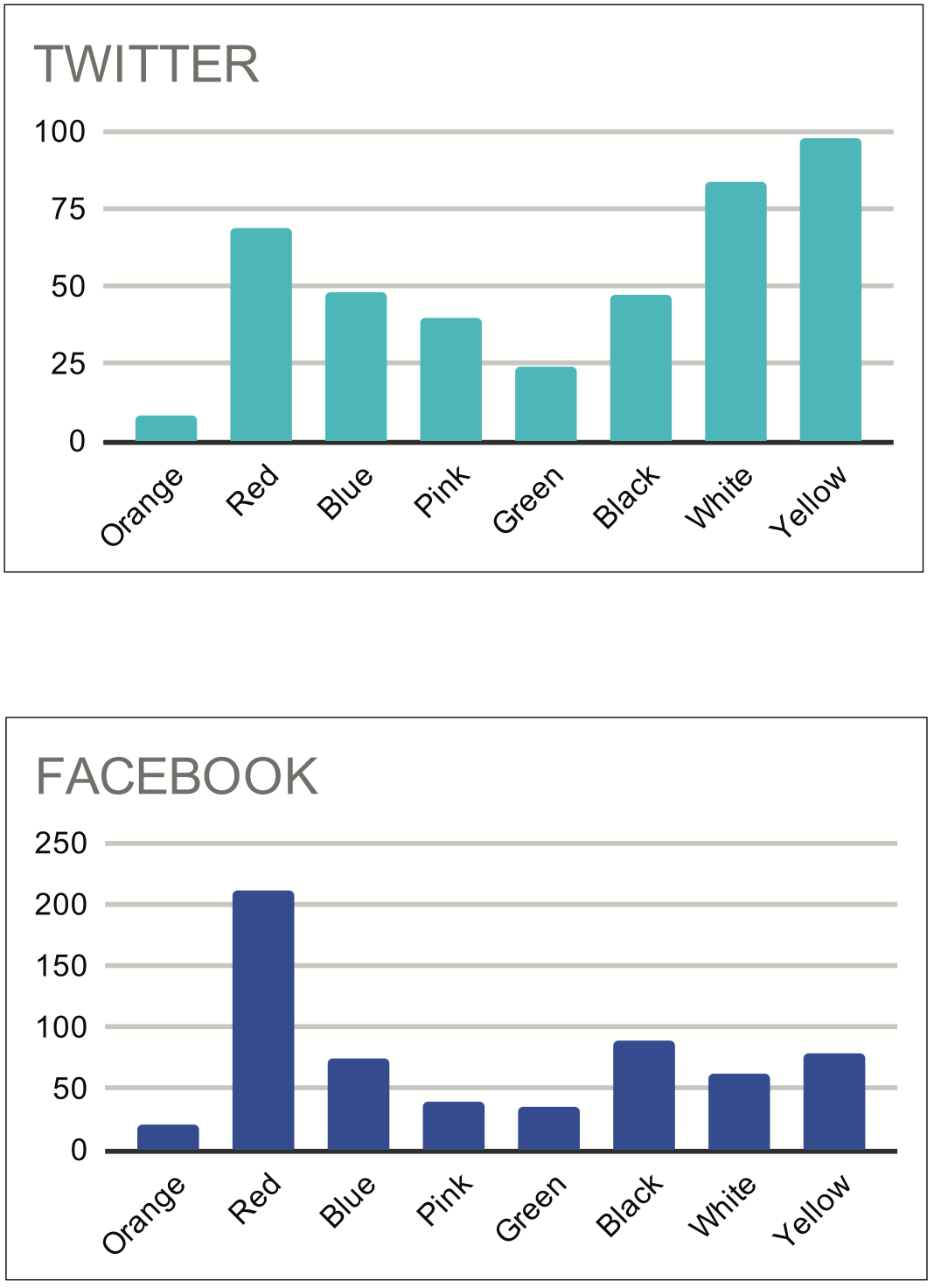How might we verify and identify the impact of popular social media sites on mental health and well-being?
The Wellness Services at Mount Royal University (MRU) promotes individual and campus well-being by empowering the MRU community to create a place where people can learn, work, play, love and live well. They provide comprehensive services and programs to support campus members’ health.
In collaboration with the Wellness Services, this project aimed to bridge the gap between data-based research and tangible engagement by creating a physical installation. The central design statement focused on exploring the impact of popular social media platforms on mental health. The exhibit sought to achieve goals such as promoting awareness of the profound effects of social media on well-being and fostering engagement in statistical data interpretation.
In collaboration with Shania D'Costa and Melissa Valleau
Ideation
Before deciding on our research question, we wanted to identify goals or outcomes that we wanted to achieve with our exhibit. We wanted to tackle mental health and social media use, while also spreading awareness of how these seemingly innocent platforms have a huge effect on our overall wellbeing. We began the ideation phase with ideas scribbled onto sticky notes. When initially designing exhibit ideas, we discovered that an essential component of the project was for users to be able to see responses in order to engage with the exhibit.
We conducted a landscape review and analysis of the resources that MRU's Wellness Services had, desk research on mental health and social media, and were inspired by several public installations by renowned designer Candy Chang.
The Build
After creating a low-fidelity prototype, we searched multiple stores for materials and voted on and decided on the best ones, meeting to assemble the project. Stages included attaching hinges, cutting open pipes, spray painting, and assembling the clear plastic cover. Final additions included an instructions panel, comment box, title using stickers, and icons for social media sites.
The Pilot
We set up the exhibit on MRU's main street - a high traffic area allowing students to engage with the installation. We received an overwhelming response and had filled up pipes from 4 hours from setting it up. Based on the flow of engagement, we set a time to reset the exhibit every 2-4 hours to maximize the number of responses we could collect.
From this engagement, we uncovered that Instagram was the most heavily engaged with social media account, and the least being Twitter. The most popular emotions that resonated were happiness, low self-esteem and anger (depicted by the colours of the pom-poms).
These data points and insights were shared with the Wellness Services and helped inform focus areas for mental health resources and support for students.
